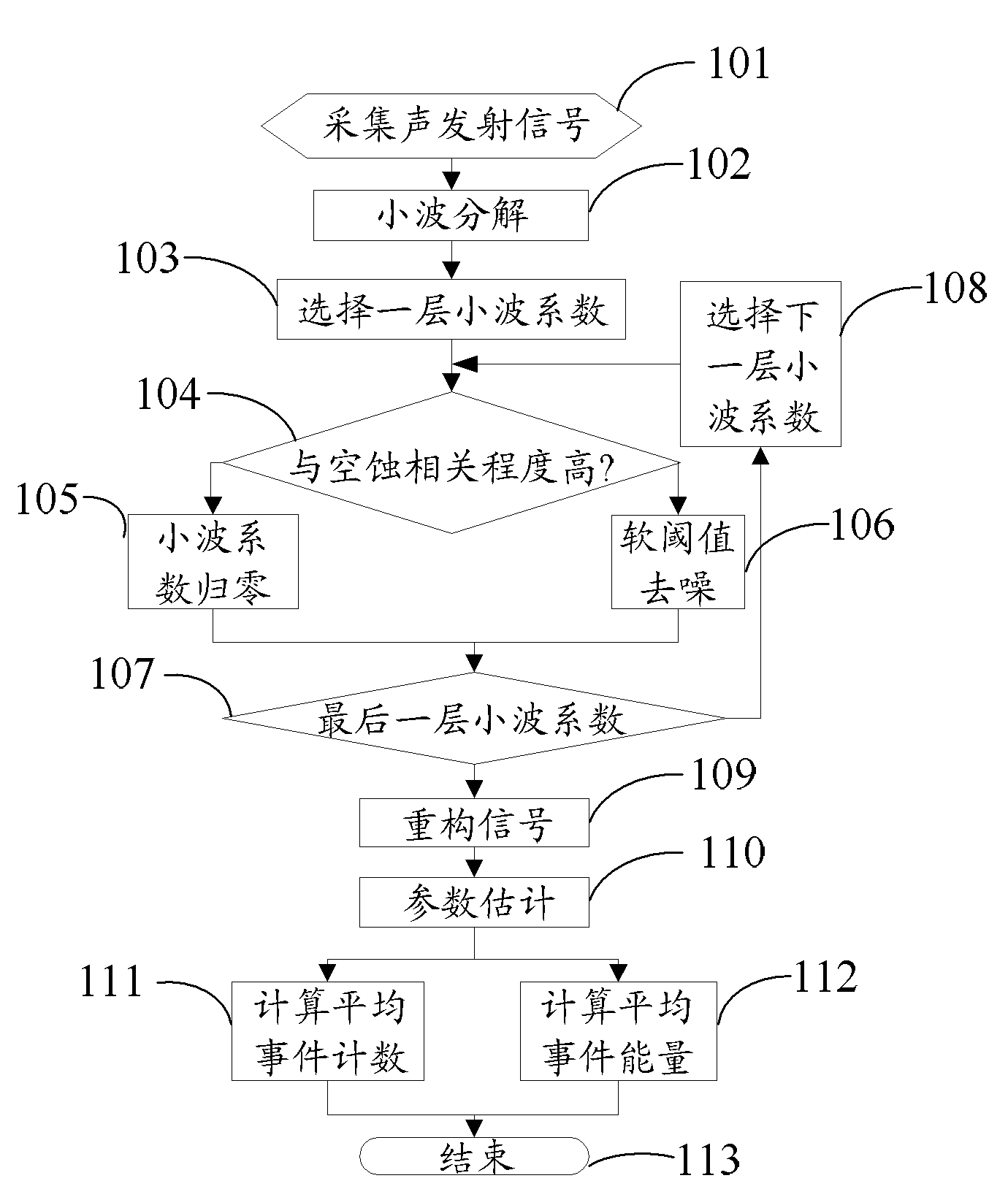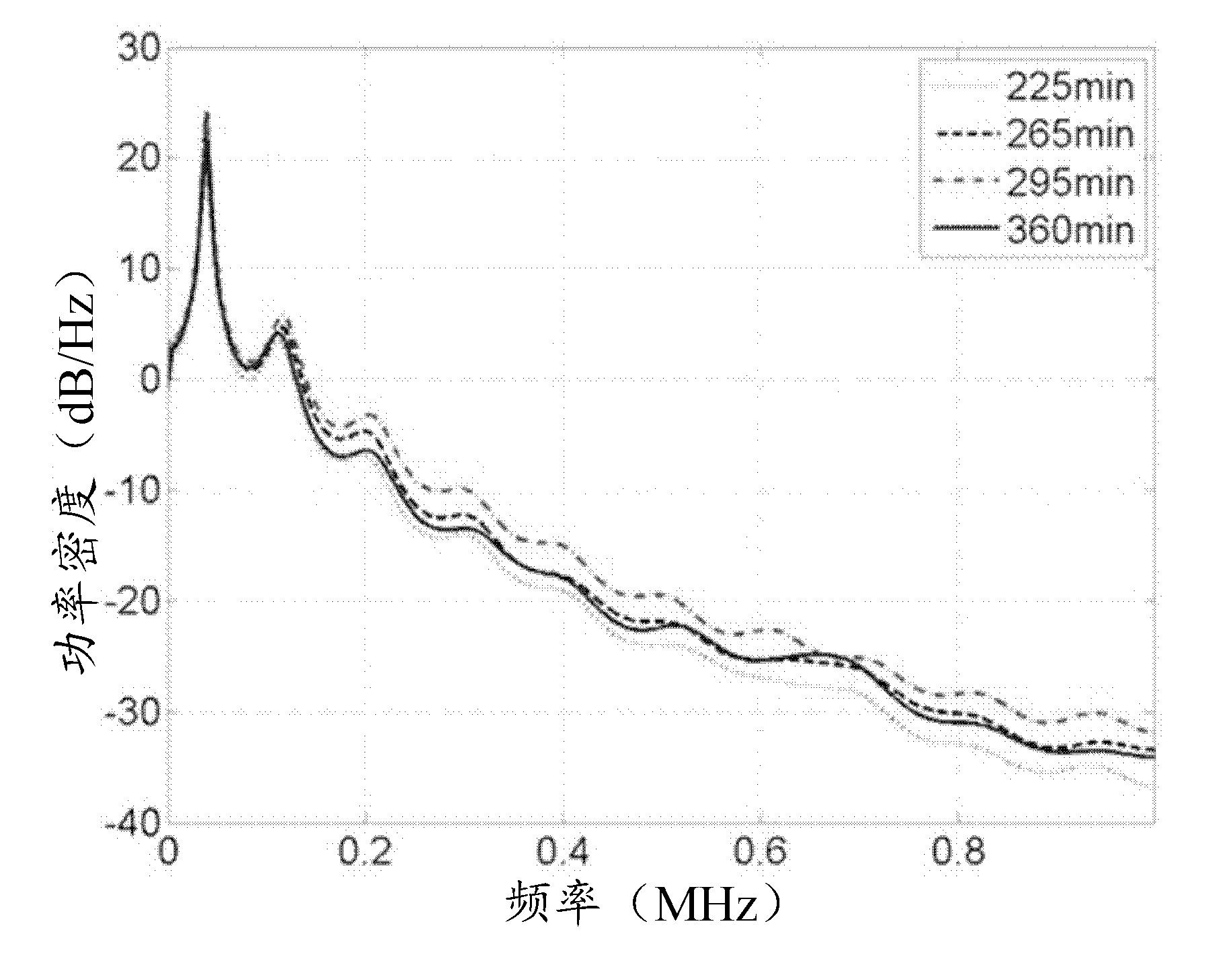Cavitation erosion detection method based on acoustic emission
A detection method and acoustic emission technology, which is applied in the direction of using acoustic emission technology for material analysis and processing detection response signals, etc., which can solve problems such as unclear correspondence and difficult estimation of cavitation
- Summary
- Abstract
- Description
- Claims
- Application Information
AI Technical Summary
Problems solved by technology
Method used
Image
Examples
Embodiment Construction
[0025] The present invention will be further described below in conjunction with the accompanying drawings and embodiments.
[0026] Such as figure 1 As shown, it is a processing flowchart of the acoustic emission-based cavitation detection method of the present invention.
[0027] In a preferred embodiment of the present invention, in the process of cavitation detection, it is first necessary to use an acoustic emission sensor to measure the acoustic emission signal generated during the cavitation process to obtain a signal containing the acoustic emission caused by the cavitation. After the signal containing the acoustic emission caused by the cavitation is obtained, the cavitation detection method based on the acoustic emission of the present invention is used to detect the cavitation.
[0028] Step 101: Use the acoustic emission sensor to collect the acoustic emission signal per unit time length during the cavitation development process, the specific process is as follows...
PUM
 Login to View More
Login to View More Abstract
Description
Claims
Application Information
 Login to View More
Login to View More - R&D
- Intellectual Property
- Life Sciences
- Materials
- Tech Scout
- Unparalleled Data Quality
- Higher Quality Content
- 60% Fewer Hallucinations
Browse by: Latest US Patents, China's latest patents, Technical Efficacy Thesaurus, Application Domain, Technology Topic, Popular Technical Reports.
© 2025 PatSnap. All rights reserved.Legal|Privacy policy|Modern Slavery Act Transparency Statement|Sitemap|About US| Contact US: help@patsnap.com



